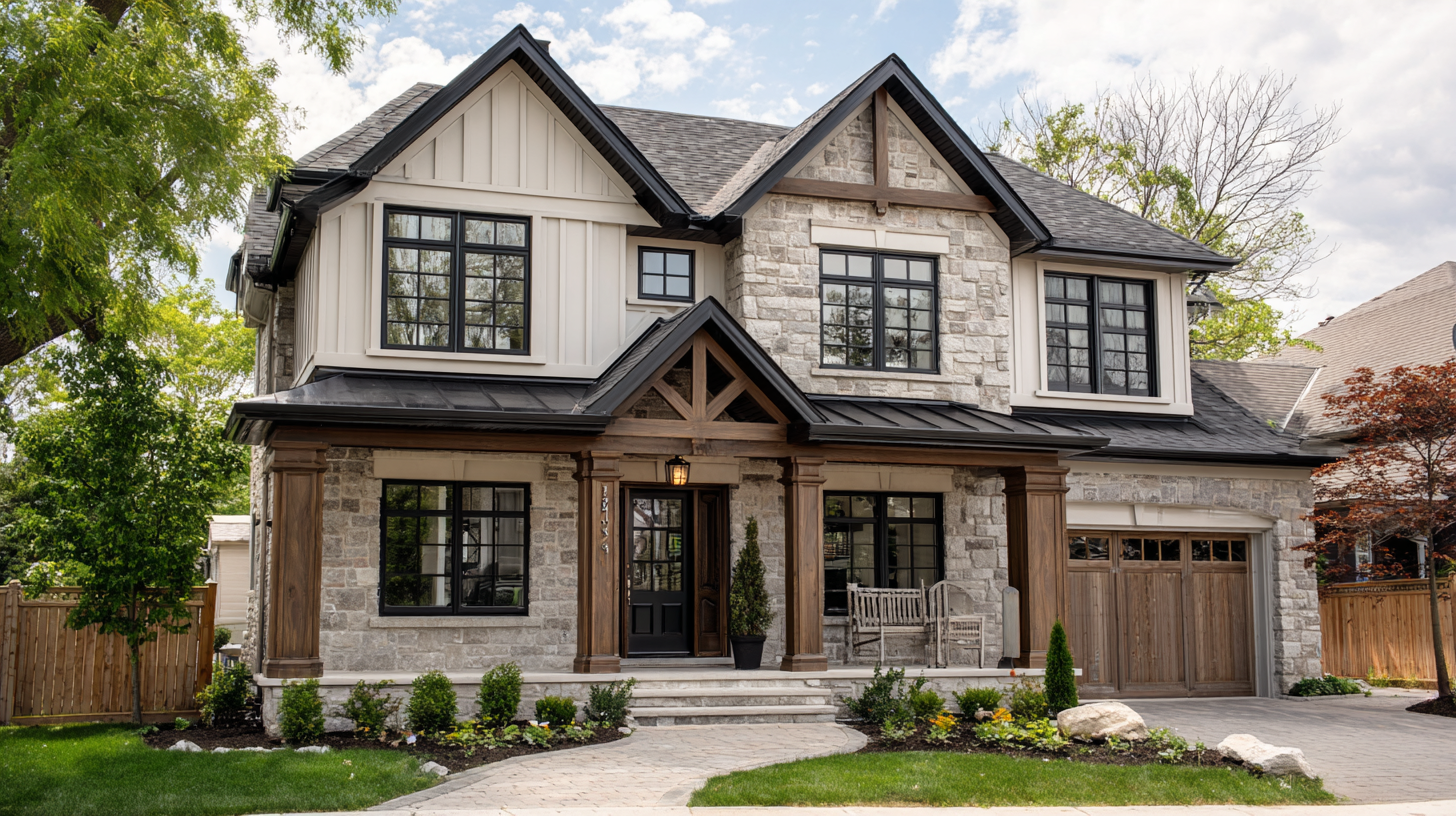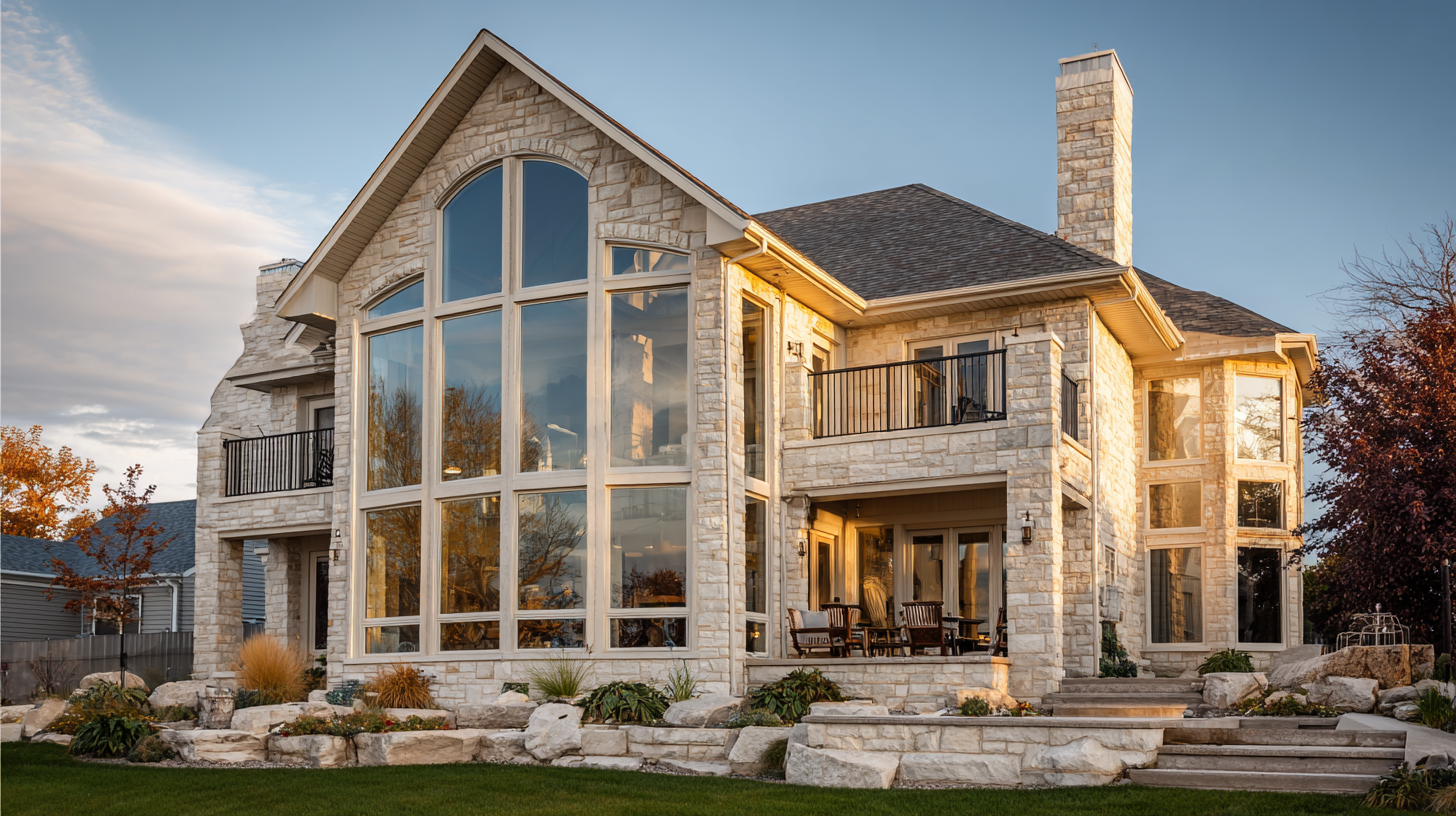How to Choose Value Windows That Enhance Your Home Efficiency
In today's eco-conscious world, homeowners are increasingly prioritizing energy efficiency, and one of the key improvements they can make is the installation of value windows. According to a report by the U.S. Department of Energy, up to 30% of a home's heating and cooling energy can be lost through inefficient windows. This significant energy loss not only impacts climate but also leads to higher utility bills, making the choice of windows a crucial decision for homeowners aiming to enhance both comfort and sustainability. Value windows, designed to optimize insulation and reduce energy consumption, can be an intelligent investment that raises a property's value while lowering energy costs. This guide will explore essential factors to consider when selecting value windows that align with your home efficiency goals, ensuring you make informed choices for a sustainable future.

Understanding Energy Efficiency Ratings for Windows
When selecting energy-efficient windows for your home, it's crucial to understand the various energy efficiency ratings that can influence your decision. One of the primary indicators is the U-factor, which measures the rate of heat transfer. According to the U.S. Department of Energy, windows with a U-factor of 0.30 or lower are considered energy-efficient. This metric helps homeowners gauge how well their windows can keep heat in during colder months and out during the warmer seasons.
Another significant rating to consider is the Solar Heat Gain Coefficient (SHGC). The SHGC measures how much solar radiation is admitted through the window, both directly transmitted and absorbed and subsequently released. A lower SHGC indicates less solar heat gain, making it ideal for warmer climates. Reports from the American Society of Heating, Refrigerating and Air-Conditioning Engineers suggest targeting an SHGC of 0.25 or lower for regions with substantial sun exposure, which can significantly reduce cooling costs.
Also essential is the Energy Star certification, which identifies products that meet strict energy efficiency criteria set by the Environmental Protection Agency. Windows bearing the Energy Star label can save homeowners an average of 12% on energy bills, and depending on local climate conditions, this savings can be even more substantial. Thus, understanding these ratings allows homeowners to make informed choices that enhance both their home's efficiency and overall comfort.

Key Features to Look for in Value Windows
When selecting value windows to enhance your home efficiency, there are several key features to consider. First and foremost, energy efficiency ratings are crucial. Windows with a low U-factor—typically below 0.30—indicate better insulation and reduced heat transfer, which can significantly lower your heating and cooling costs. According to the Department of Energy, upgrading to energy-efficient windows can save homeowners an average of $126 to $465 per year, depending on their local climate and energy costs.
Another vital feature is the glazing type. Double or triple-pane glass windows provide an extra layer of insulation compared to single-pane options. In fact, the National Fenestration Rating Council (NFRC) states that double-glazed windows can reduce energy loss by up to 55% versus single-pane alternatives. Additionally, look for windows with low-emissivity (Low-E) coatings to reflect heat back into your home during winter and keep it exterior during summer, further enhancing overall energy efficiency. Selecting windows that prioritize these features can lead to both immediate savings and long-term benefits for your home.
Comparing Window Materials: Pros and Cons for Home Efficiency
When choosing windows to enhance your home’s efficiency, it's crucial to compare the pros and cons of different materials. Vinyl windows, for instance, are known for their energy efficiency and low maintenance requirements, making them a popular choice for homeowners looking to reduce their heating and cooling costs. They provide an excellent insulating layer, minimizing air leakage and ultimately leading to a more comfortable living space. However, vinyl can warp under extreme temperatures and may not be as environmentally friendly as other options.
On the other hand, wood windows offer superior aesthetics and natural insulation properties. They can significantly enhance the architectural appeal of your home while also providing effective barriers against air leaks. The downside is that they require regular maintenance and can be susceptible to rot if not properly cared for. Aluminum windows, while durable and low-maintenance, are less efficient in terms of insulation unless equipped with thermal breaks. Each material has its advantages and disadvantages, and understanding these can help you make an informed decision that aligns with your home efficiency goals.
How to Choose Value Windows That Enhance Your Home Efficiency
| Window Material | Pros | Cons | Energy Efficiency Rating | Cost Range per Window |
|---|---|---|---|---|
| Vinyl | Low maintenance, good insulation, affordable | Limited color options, may fade over time | R-3 to R-5 | $300 - $600 |
| Wood | Aesthetically pleasing, natural insulation | Requires regular maintenance, can rot | R-2 to R-4 | $800 - $1200 |
| Aluminum | Durable, lightweight | Poor insulation, can conduct heat | R-1 to R-3 | $500 - $900 |
| Fiberglass | Strong, good insulation, low maintenance | Higher upfront cost, limited color options | R-4 to R-6 | $700 - $1400 |
Tips for Installing Windows to Maximize Energy Savings
When it comes to enhancing your home’s energy efficiency, selecting the right windows is crucial. Proper installation is just as important as the windows themselves. Begin by ensuring that the window frames are level and square; this foundational work minimizes gaps that can lead to air leaks. Additionally, using high-quality caulking and insulation around the edges will further reduce the potential for drafts, which can undermine your heating and cooling efforts.
Another vital tip for maximizing energy savings during window installation is to consider the orientation of your home. Installing energy-efficient windows that capitalize on natural light can significantly reduce your reliance on artificial heating and cooling. For instance, north-facing windows usually receive less direct sun, making them a good choice for energy-efficient glazing that reflects heat. Meanwhile, using low-E glass can help regulate indoor temperatures by keeping the heat in during winter and reflecting it away during summer, ensuring your home stays comfortable year-round.
Common Mistakes to Avoid When Choosing Value Windows
Choosing the right value windows for your home can significantly enhance energy efficiency, but there are common pitfalls that homeowners must avoid. One major mistake is overlooking the importance of window U-values. According to a study by the National Fenestration Rating Council, windows with lower U-values are more effective at preventing heat loss, which can lead to substantial savings on heating bills. When selecting new windows, ensure that you consider models with U-values that meet or exceed Energy Star standards to maximize your home's efficiency.

Another frequent error is not accounting for the installation process. Proper installation is crucial; even the best windows can fail to perform if not installed correctly. Research shows that up to 30% of window performance issues stem from improper installation. It's essential to engage qualified professionals for installation and ensure they follow best practices to avoid costly repairs and inefficiencies. Additionally, many homeowners mistakenly focus on aesthetics over functionality. While style is essential, ensure that the windows you choose also contribute to thermal performance and durability. Balancing beauty and efficiency is key for a long-term investment that pays off in comfort and savings.
Related Posts
-

Innovative Windows for You Transforming Your Space with Energy Efficiency and Style
-

7 Reasons Why Premium Windows Elevate Your Home Value
-

Advantages of Installing the Right Windows for Your Home
-

How to Choose the Best Great Windows for Your Next Project
-

Top Strategies for Sourcing the Best Windows for You in a Global Market
-

Ultimate Guide to Understanding Windows Made Innovations
